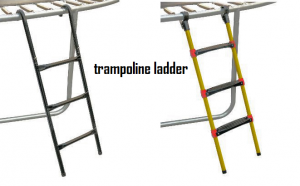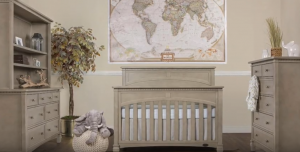
One of the greatest methods to maintain your knives is to keep them safe while sharpening them often. The common habit of storing knives together with the rest of the cutlery in a kitchen drawer is convenient, but it may lead to dulling and even chipping of the blades over time.
How a chef knife recommends you keep your knife block organized and how you might benefit from doing the same. Knife holders might be magnetic, in a block, or in a drawer. Learn from the expert advice of someone who has spent time securing and organizing knives. If you toss your knives in with the rest of your silverware and cooking equipment, you run the danger of breaking or dulling the blades and maybe injuring yourself. Educate yourself on the many methods of safely storing blades.
Contents
Why Does Proper Knife Storage Matter?
Mishandling and improper storage of knives may cause both property damage and personal harm. In addition to fast dulling your knives, nicks, and dents caused by storing these instruments unsheathed in a drawer with other silverware may be difficult to fix.
A Chef’s Recommendations for Knife Storage
A chef offers the following advice for safe and effective knife storage at home:
Choose the most appropriate mode of storage. If you want to free up room on your kitchen counter, magnetic knife strips or drawer blocks are your best bet. Unlike knife blocks, which take up valuable counter space, drawer docks allow you to readily reach all of your knives without having to remove any of them from their slots.
Think about how tidy everything is. If you don’t dry or clean your wooden knife block correctly, it may become a breeding ground for yeast and mold, much like a wooden cutting board. To avoid any potential knife mishaps, it’s best to keep them in a drawer block or on a magnetic strip. Depending on how near your magnetic bar is to your kitchen’s prep space, it may also draw food spatter if you store knives there.
Take practicality into account. The most practical option is a magnetic strip or countertop block. Knives stored here are conveniently close at hand for both usage and safekeeping.
Choose a piece of equipment that can be used to hone your skills by clicking here. Certain knife blocks and knife docks for counters have built-in sharpeners. If keeping your knives in tip-top shape is a top concern, you should invest in a set of storage blocks made for that purpose.
Put the knife’s cutting edge up. Always store your knife with the blade facing away from you, whether in a knife block or a sheath that fits in a drawer. A knife’s edge may be dulled by resting it there.
How to store knives in a knife block according to a chef
According to a chef Many solutions exist for safely stowing blades in the kitchen while they are not in use. These are the top six methods for keeping knives safe:
Edge guards: Putting plastic sheaths called edge guards over each knife’s blade while they’re stored in the cutlery drawer is an excellent safety measure. The use of edge protectors may help extend the life of your blades.
Knife blocks: The second style of knife storage is the knife block, often made of wood and featuring separate slots for each type of knife. Often, a universal knife block will include compartments for a variety of knives, including paring knives, steak knives, sharpening rods, bread knives, chef’s knives, meat cleavers, and kitchen shears. Most of these knife blocks for the counter are made of wood, but you can also get glass ones and ones with rubber or plastic rods for sharpening your knives.
Drawer knife blocks: Knife blocks for the kitchen drawers have separate compartments to store each of your knives. To keep your blades safe, secure, and out of sight, invest on a knife drawer insert.
Leather knife rolls: Rolls of leather for storing knives include holes of varying widths to accommodate knives of different lengths and widths. You can conveniently store your knives in a drawer without worrying about the blades becoming damaged with a leather knife roll. It is often used by cooks as a convenient way to keep their knives safe while not in use and when traveling.
Magnetic knife strip: A magnetic knife strip is a space-saving alternative to a knife block, and a handy addition to any kitchen. These strips attach to the wall, giving you a magnetic strip for your knife set. You can keep your knives neatly aligned in a row by installing magnetic strips above your kitchen counter.
Magnetic knife blocks: Magnetic knife blocks are an alternative to traditional knife blocks; they are visually similar but do not include holes for the knives. The magnetic block prevents the blades from sliding in and out of their slots, protecting their cutting edges.
FAQs: how to store knives in a knife block according to a chef
Q. How do you store knives in a block?
When storing knives in a block, it’s important to slide the knife in by pressing the duller, back side of the blade against the block, to keep the cutting edge sharp. Wall storage makes each knife easy to find. If you have the space, a magnetic knife strip mounted on the wall above your counter is a great way to store your knives.
Q. How many knives should be stored in a drawer?
Cons of in-drawer knife storage: Some drawers aren’t large enough to handle upwards of 15 knives or so, so you may need to store your steak knives elsewhere and keep the drawer for your most important knives (i.e., chef’s knife ($150, Amazon) paring knife, serrated knife, etc.)
Q. What is the best knife storage solution for home cooks?
For most home cooks, we recommend a magnetic knife strip or a cork-lined knife holder. Both of these knife storage solutions offer far more flexibility than knife blocks, without sacrificing safety or aesthetics. I have a bit of a kitchen knife–buying obsession.
Q. What are the pros and cons of knife blocks?
Pros: Knife blocks can hold your entire set of knives, shears, and sharpening tools in one place. It’s easy to organize your knives, as each has a designated slot, then grab them on the fly. Of course, knife blocks also look attractive on the counter and can show off your impressive collection.











